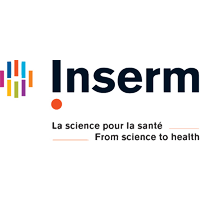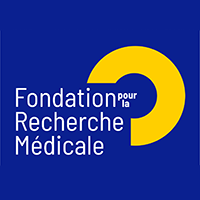The research in our laboratory focuses on the identification of the host cellular pathways that determine the susceptibility of humans to viral disease. We are mainly interested in medically important RNA viruses (mosquito-borne viruses, respiratory viruses) causing emerging life-threatening infections in humans. Our major goal is to decipher the mechanisms by which these viruses manipulate host cell functions to facilitate their life cycle and to escape immune responses. Understanding the underlying molecular and cellular mechanisms may help to reveal new targets for the design of antiviral strategies. To this end, we are using a number of cellular, molecular and virological techniques with state-of-the-art technologies such as loss and gain of function screening, advanced proteomics, gene expression analysis and live cell microscopy.
Dengue and Zika virus entry into target cells
Over the recent years, our group has made key contributions in our understanding of the entry mechanisms used by arboviruses to infect their target cells. We focused our studies on dengue viruses (DENV) and ZIKA virus (ZIKV), two mosquito-borne flaviviruses that represent major global health problems during the last decades.
-
We have identified the C-type lectin receptor DC-SIGN as a key entry factor for the four DENV serotypes and ZIKV into skin dendritic cells. (Navarro-Sanchez et al., Embo Reports, 2003; Lozach et al., JBC, 2005, Hamel et al. JVI 2005).
-
We discovered that the TIM and TAM proteins, two receptor families that mediate the phosphatidylserine (PS)-dependent phagocytic removal of apoptotic cells, are DENV entry factors. TIM and TAM receptors mediate DENV infection by interacting with PS expressed on the surface of DENV particles (Amara et al. Nat Rev Microbiol 2015, Meertens et al., Cell Host & Microbes, 2012). These studies highlight for the first time that DENV mimics apoptotic debris and uses the apoptotic cell clearance pathway for its infectious entry.
-
We showed that the PS receptor TIM-1 is an authentic DENV entry receptor (Dejarnac et al., Cell Reports, 2018). TIM-1 is constitutively ubiquitinated (Ub)at lysine residues K338 and K346 residues located in its cytoplasmic domain. Ub TIM-1 interacts with STAM-1, a component of the ESCRT-0 complex involved in intracellular trafficking of ubiquitinated cargos, to mediate DENV infection.
-
ZIKV is an emerging flavivirus responsible for neurological complications, such as congenital microcephaly. We showed that ZIKV interacts with the AXL receptor to infect astrocytes and microglial cells in human fetal brain (Meertens et al., Cell Reports, 2017). ZIKV binding to AXL activates its receptor kinase activity, which initiates signal transduction leading to inhibition of the type I interferon response and therefore facilitates viral infection (Meertens et al., Cell Reports, 2017).
-
We identified two AXL inhibitors (Axl decoy receptor MYD1 and the kinase inhibitor R428) that efficiently inhibit ZIKV infection (Meertens et al., Cell Reports, 2017, Espinosa et al. Front Immunol 2022).
Mechanisms of Dengue virus replication
DENV, like all flaviviruses, encodes seven non-structural (NS) proteins that co-assemble and recruit poorly characterized host factors to form the DENV replication complex (RC) essential for viral infection. The assembly of DENV RC and its RNA genome generate specific organelle-like structures in the host endoplasmic reticulum that facilitate RNA amplification and protect the viral double-stranded RNA from immune responses.
-
Using Flag-HA tagged DENV replicons, we have purified for the first time the DENV RC and provides a global proteomic analysis of its host factor composition (Hafirassou et al. Cell Reports, 2017).
-
Functional studies highlight an important role of RACK1 and oligosaccharyltransferase (OST) complexes during DENV replication
-
The OST complex mediates DENV NS1 and NS4B glycosylation, and pharmacological inhibition of its N-glycosylation activity strongly impairs DENV infection
-
The scaffold protein RACK1, a core component of the 40S ribosomal subunit, recruits the RNA binding proteins Vigilin and SERBP1, which link the DENV RNA genome to the translation machinery for efficient infection (Brugier et al. J. Virol., 2022).
-
Using a genome-wide CRISPR-Cas9 screen, we identified DPM1 and -3, two subunits of the DPMS complex, as important host factors for the replication of DENV as well as other related viruses such as ZIKV. We established that DPMS complex plays dual roles during viral infection, by regulating viral RNA replication and promoting viral structural glycoprotein folding/stability (Labeau et al. J. Virol. 2020)
Chikungunya virus replication and pathogenesis
Our team has made major contribution in our understanding of the biology and pathogenesis of chikungunya virus (CHIKV), a re-emerging alphavirus that is transmitted to humans by mosquitoes and causes musculoskeletal and joint pain.
-
We performed a genome-wide CRISPR-Cas9 screen to identify the host factors that account for CHIKV tropism for joint and muscles tissues.
-
We identified the four-and-a-half lime domain protein 1 (FHL1), a cytoplasmic protein mainly expressed in muscles and fibroblasts, as a major host factor for CHIKV infection (Meertens et al., Nature, 2019).
-
We found that dermal fibroblasts and muscle cells derived from patients with Emery–Dreifuss muscular dystrophy that lack functional FHL1 are resistant to CHIKV infection.
-
Fhl1 knock out mice are resistant to CHIKV infection and do not develop disease.
-
Mechanistically, FHL1 interacts with the viral protein nsP3 to mediate CHIKV replication
SARS-CoV-2 infection and COVID-19
Our group have participated to the effort against SARS-CoV-2 during the COVID-19 pandemic and provided the following key contributions:
-
We have isolated primary SARS-CoV-2 viral strains from infected patients, and studied their interaction with human plasmacytoid pre-dendritic cells (pDC), a key player in antiviral immunity. We showed that human pDCs are activated by SARS-CoV-2 through IRAK4- and UNC93B1-regulated pathways and contribute to type I interferon-dependent immunity against SARS-CoV-2 (Onodi et al. J. Exp. Med., 2021).
-
In parallel, we have collaborated with Pr Jean-Laurent Casanova’s team (Rockefeller University and Imagine Institute) to unravel the cellular mechanisms underlying severe COVID-19 in patients with mutations in genes involved in innate immunity. We showed that pDCs isolated from patients harboring IRF7 or TLR7 deficiency have a strong defect in their capacity to produce type I IFN in response to SARS-CoV-2 ( Zhang et al. Science 2020, Asano et al. Sci. Immunol. 2021).
-
We undertook a comprehensive identification of RNA-binding protein by MS (ChIRP-MS) approach to establish a global map of the SARS-CoV-2 genome interactome. By combining these proteomics data with gene-silencing experiments, we identified a set of SARS-CoV-2 host dependency factors that affect infection and could be targetable for antiviral therapies (Labeau et al. Cell Reports 2022).
► Espino A, Gouilly J, Chen Q, Colin P, Guerby P, Izopet J, Amara A, Tabiasco J, Al-Daccak R, El Costa H, Jabrane-Ferrat N. The mechanisms underlying the immune control of Zika virus infection at the maternal-fetal interface. Front Immunol 2022 Nov 22;13:1000861.
► Labeau A, Fery-Simonian L, Lefevre-Utile A, Pourcelot M, Bonnet-Madin L, Soumelis V, Lotteau V, Vidalain PO, Amara A# and Meertens L# Characterization and functional interrogation of the SARS-CoV-2 RNA interactome. Cell reports. 2022, Apr 26;39(4):110744, # corresponding author
► Delaugerre, C ; Foissac, F ; Abdoul, H ; Masson, G ; Choupeaux, L ; Dufour, E & al , Prevention of SARS-CoV-2 transmission during a large, live, indoor gathering (SPRING): a non-inferiority, randomised, controlled trial., Lancet Infect Dis, 2022, 22, 341-348
► Brugier A, Hafirassou M.L, Pourcelot M, Baldaccini M, Kril V, Couture L, Kümmerer B.M, Gallois-Montbrun S, Bonnet-Madin L, Vidalain P.O, Delaugerre C., Pfeffer S , Meertens L, Amara A. RACK1 associates with RNA-binding proteins Vigilin and SERBP1 to facilitate dengue virus replication Virol. 2022, Apr 13;96(7):e0196221.
► Kril V, Aïqui-Reboul-Paviet O, Briant L, Amara A. New Insights into Chikungunya Virus Infection and Pathogenesis. Annual Reviews in Virology. 2021 Sep 29;8(1):327-347. doi: 10.1146/annurev-virology-091919-102021. Epub 2021 Jul 13.
► Asano T, Boisson B, Onodi F, Matuozzo D, Moncada-Velez M, Maglorius Renkilaraj MRL, Zhang P, Meertens L, Bolze A, Materna M, Korniotis S, Gervais A, Talouarn E, Bigio B, Seeleuthner Y, Bilguvar K, Zhang Y, Neehus AL, Ogishi M, Pelham SJ, Le Voyer T, Rosain J, Philippot Q, Soler-Palacín P, Colobran R, Martin-Nalda A, Rivière JG, Tandjaoui-Lambiotte Y, Chaïbi K, Shahrooei M, Darazam IA, Olyaei NA, Mansouri D, Hatipoğlu N, Palabiyik F, Ozcelik T, Novelli G, Novelli A, Casari G, Aiuti A, Carrera P, Bondesan S, Barzaghi F, Rovere-Querini P, Tresoldi C, Franco JL, Rojas J, Reyes LF, Bustos IG, Arias AA, Morelle G, Christèle K, Troya J, Planas-Serra L, Schlüter A, Gut M, Pujol A, Allende LM, Rodriguez-Gallego C, Flores C, Cabrera-Marante O, Pleguezuelo DE, de Diego RP, Keles S, Aytekin G, Akcan OM, Bryceson YT, Bergman P, Brodin P, Smole D, Smith CIE, Norlin AC, Campbell TM, Covill LE, Hammarström L, Pan-Hammarström Q, Abolhassani H, Mane S, Marr N, Ata M, Al Ali F, Khan T, Spaan AN, Dalgard CL, Bonfanti P, Biondi A, Tubiana S, Burdet C, Nussbaum R, Kahn-Kirby A, Snow AL; COVID Human Genetic Effort; COVID-STORM Clinicians; COVID Clinicians; Imagine COVID Group; French COVID Cohort Study Group; CoV-Contact Cohort; Amsterdam UMC Covid-; Biobank; NIAID-USUHS COVID Study Group, Bustamante J, Puel A, Boisson-Dupuis S, Zhang SY, Béziat V, Lifton RP, Bastard P, Notarangelo LD, Abel L, Su HC, Jouanguy E, Amara A, Soumelis V, Cobat A, Zhang Q, Casanova JL. X-linked recessive TLR7 deficiency in ~1% of men under 60 years old with life-threatening COVID-19. Science Immunol., august 19;6(62):eabl4348. doi: 10.1126/sciimmunol.abl4348.
► Onodi F., Bonnet-Madin L., Meertens L. Karpf L., Poirot J., Zhang SY., Picard C., Puel A., Jouanguy E, Zhang Q., Le Goff J., Molina J.M, Delaugerre C., Casanova J.L, Amara A #, and Soumelis V. # (2021) SARS-CoV-2 induces human plasmacytoid pre-dendritic cell diversification via UNC93B and IRAK4 . J.Exp.Med Apr 5;218(4):e20201387. doi: 10.1084/jem.20201387. # corresponding author
► Zhang Q, Bastard P, Liu Z, Le Pen J, Moncada-Velez M, Chen J, Ogishi M, Sabli IKD, Hodeib S, Korol C, Rosain J, Bilguvar K, Ye J, Bolze A, Bigio B, Yang R, Arias AA, Zhou Q, Zhang Y, Onodi F, Korniotis S, Karpf L, Philippot Q, Chbihi M, Bonnet-Madin L, Dorgham K, Smith N, Schneider WM, Razooky BS, Hoffmann HH, Michailidis E, Moens L, Han JE, Lorenzo L, Bizien L, Meade P, Neehus AL, Ugurbil AC, Corneau A, Kerner G, Zhang P, Rapaport F, Seeleuthner Y, Manry J, Masson C, Schmitt Y, Schlüter A, Le Voyer T, Khan T, Li J, Fellay J, Roussel L, Shahrooei M, Alosaimi MF, Mansouri D, Al-Saud H, Al-Mulla F, Almourfi F, Al-Muhsen SZ, Alsohime F, Al Turki S, Hasanato R, van de Beek D, Biondi A, Bettini LR, D’Angio’ M, Bonfanti P, Imberti L, Sottini A, Paghera S, Quiros-Roldan E, Rossi C, Oler AJ, Tompkins MF, Alba C, Vandernoot I, Goffard JC, Smits G, Migeotte I, Haerynck F, Soler-Palacin P, Martin-Nalda A, Colobran R, Morange PE, Keles S, Çölkesen F, Ozcelik T, Yasar KK, Senoglu S, Karabela ŞN, Rodríguez-Gallego C, Novelli G, Hraiech S, Tandjaoui-Lambiotte Y, Duval X, Laouénan C; COVID-STORM Clinicians; COVID Clinicians; Imagine COVID Group; French COVID Cohort Study Group; CoV-Contact Cohort; Amsterdam UMC Covid-19 Biobank; COVID Human Genetic Effort; NIAID-USUHS/TAGC COVID Immunity Group, Snow AL, Dalgard CL, Milner JD, Vinh DC, Mogensen TH, Marr N, Spaan AN, Boisson B, Boisson-Dupuis S, Bustamante J, Puel A, Ciancanelli MJ, Meyts I, Maniatis T, Soumelis V, AMARA A, Nussenzweig M, García-Sastre A, Krammer F, Pujol A, Duffy D, Lifton RP, Zhang SY, Gorochov G, Béziat V, Jouanguy E, Sancho-Shimizu V, Rice CM, Abel L, Notarangelo LD, Cobat A, Su HC, Casanova JL (2020) . Inborn errors of type I IFN immunity in patients with life-threatening COVID-19. SCIENCE 2020 Oct 23;370(6515):eabd4570. doi: 10.1126/science.abd4570. Epub 2020 Sep 24. PMID: 32972995£
► Labeau A, Simon-Loriere E, Hafirassou M-H, Bonnet-Madin L, Tessier S, Zamborlini A, Dupré T, Seta N, Schwartz O, Chaix M.L, Delaugerre C., AMARA A# and Meertens L#. A genome-wide CRISPR-Cas9 screen identifies the dolichol-phosphate mannose synthase complex as a host dependency factor for dengue virus infection. J VIROL, Mar 17;94(7). pii: e01751-19. doi: 10.1128/JVI.01751-19. # Co-corresponding authors
► Meertens L., Hafirassou M.L, Couderc T., Bonnet-Madin L., Kril V., Kümmerer B.M, Labeau A, Brugier A, Simon-Loriere E., Burlaud-Gaillard J., Doyen C., Pezzi L., Goupil T., Rafasse S, Vidalain P.O, Bertrand Legout A., Gueneau L., Juntas-Morales R., Ben Yaou R, Bonne G., De Lamballerie X, Benkirane M., Roingeard P., Delaugerre C, Lecuit M and AMARA A. (2019) FHL1 is a major host factor for Chikungunya infection. Nature, Oct;574(7777):259-263.
► Monel B, Rajah MM, Hafirassou ML, Sid Ahmed S, Burlaud-Gaillard J, Zhu PP, Nevers Q, Buchrieser J, Porrot F, Meunier C, Amraoui S, Chazal M, Salles A, Jouvenet N, Roingeard P, Blackstone C, AMARA A, Schwartz O. (2019) Atlastin Endoplasmic Reticulum-Shaping Proteins Facilitate Zika Virus Replication. J. VIROL Nov 13;93(23). pii: e01047-19. doi: 10.1128/JVI.01047-19
► Dejarnac O, Hafirassou ML, Chazal M, Versapuech M, Gaillard J, Perera-Lecoin M, Umana-Diaz C, Bonnet-Madin L, Carnec X, Tinevez JY, Delaugerre C, Schwartz O, Roingeard P, Jouvenet N, Berlioz-Torrent C, Meertens L, AMARA A. (2018) TIM-1 Ubiquitination Mediates Dengue Virus Entry. Cell Reports May 8;23(6):1779-1793. doi: 10.1016/j.celrep.2018.04.013.
► Hafirassou ML, Meertens L, Umaña-Diaz C, Labeau A, Dejarnac O, Bonnet-Madin L, Kümmerer BM, Delaugerre C, Roingeard P, Vidalain PO, AMARA A. (2017) A Global Interactome Map of the Dengue Virus NS1 Identifies Virus Restriction and Dependency Host Factors. Cell Reports Dec 26;21(13):3900-3913. doi: 10.1016/j.celrep.2017.11.094.
► Monel B, Compton AA, Bruel T, Amraoui S, Burlaud-Gaillard J, Roy N, Guivel-Benhassine F, Porrot F, Génin P, Meertens L, Sinigaglia L, Jouvenet N, Weil R, Casartelli N, Demangel C, Simon-Lorière E, Moris A, Roingeard P, AMARA A, Schwartz O. (2017) Zika virus induces massive cytoplasmic vacuolization and paraptosis-like death in infected cells. EMBO J. Jun 14;36(12):1653-1668. doi: 10.15252/embj.201695597. Epub 2017 May 4.
► Meertens L, Labeau A, Dejarnac O, Cipriani S, Sinigaglia L, Bonnet-Madin L, Le Charpentier T, Hafirassou ML, Zamborlini A, Cao-Lormeau VM, Coulpier M, Missé D, Jouvenet N, Tabibiazar R, Gressens P, Schwartz O, AMARA A (2017). Axl Mediates ZIKA Virus Entry in Human Glial Cells and Modulates Innate Immune Responses. Cell Reports Jan 10;18(2):324-333. doi: 10.1016/j.celrep.2016.12.045.
► Fernandez-Garcia, M. D., L. Meertens, M. Chazal, M. L. Hafirassou, O. Dejarnac, A. Zamborlini, P. Despres, N. Sauvonnet, F. Arenzana-Seisdedos, N. Jouvenet and A. AMARA (2016). « Vaccine and Wild-Type Strains of Yellow Fever Virus Engage Distinct Entry Mechanisms and Differentially Stimulate Antiviral Immune Responses. » MBio 2016 7(1): e01956-01915.
► Carnec, X., L. Meertens, O. Dejarnac, M. Perera-Lecoin, M. L. Hafirassou, J. Kitaura, R. Ramdasi, O. Schwartz and A. AMARA (2015). « The Phosphatidylserine and Phosphatidylethanolamine Receptor CD300a Binds Dengue Virus and Enhances Infection. » J VIROL , 90(1): 92-102.
► Hamel, R., O. Dejarnac, S. Wichit, P. Ekchariyawat, A. Neyret, N. Luplertlop, M. Perera-Lecoin, P. Surasombatpattana, L. Talignani, F. Thomas, V. M. Cao-Lormeau, V. Choumet, L. Briant, P. Despres, A. AMARA, H. Yssel and D. Misse (2015). « Biology of Zika Virus Infection in Human Skin Cells. » J VIROL 89(17): 8880-8896. Major paper in the field.
► AMARA A & Mercer J. (2015) Viral apoptotic mimicry. Nature Reviews Microbiology Aug;13(8):461-9.
► Meertens L, Carnec X, Perera Lecoin M , Ramdasi R, Guivel-Benhassine F, Lew E, Lemke G, Schwartz O and AMARA A (2012) The TIM and TAM Families of Phosphatidylserine Receptors Mediate Dengue Virus Entry. Cell Host & Microbe, 12, 4, 544-557
Lucie BONNET MADIN
Khadija BOURBIBE
Alexis BRUGIER
Sylvain CHAWKI
Xavier CARNEC
Élodie COLIN
Ophélie DEJARNAC
Maria-Dolores FERNANDEZ-GARCIA
Julien GRAS
Vasiliya KRIL
Erwan KUBES
Mohamed Hamine LAFIRASSOU
Athena LABEAU
Zoé LAMA
Stéphane MAROT
Fanny ODONI
Manuel PERERA
Marie POURCELOT
Rasika Mohan RAMSADI
Sarah TESSIER
Claudia UMANA-DIAZ








